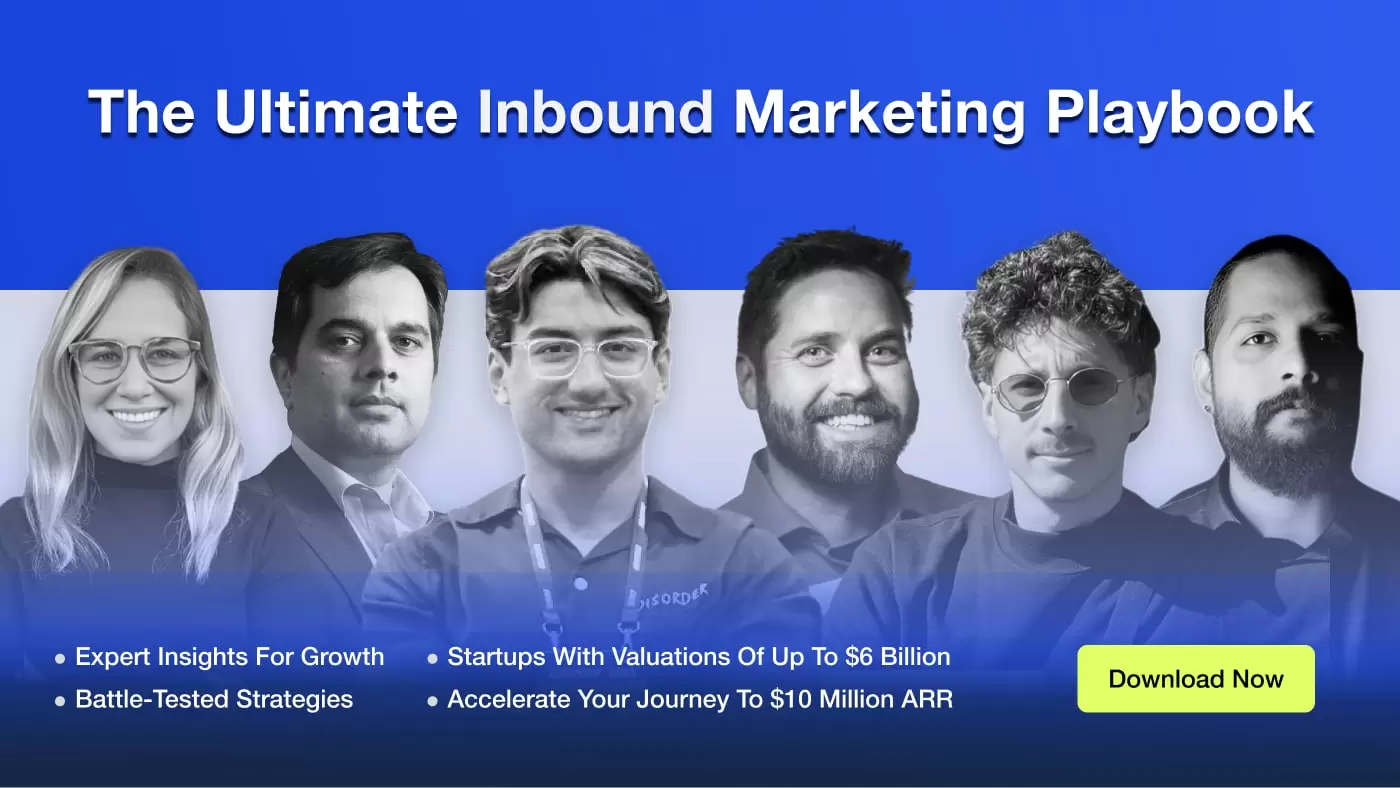Optimizing B2B Messaging Through Testing and Learning
By testing different elements, capturing leads effectively, and staying informed through expert resources, you can refine your messaging and maximize your homepage’s performance.
Lead Capture Strategies for B2B SaaS Homepages
An essential goal of your B2B SaaS homepage is to capture leads. To achieve this, your homepage must offer value, engage visitors, and make it easy for them to take the next step in their buyer’s journey.
1. Lead Magnets
Lead magnets are offers designed to entice visitors to share their contact information in exchange for valuable content or resources.
What are Lead Magnets?
A lead magnet is an item or resource provided in exchange for a visitor’s contact information. These can range from downloadable content, templates, eBooks, or free trials.
Examples:
- A SaaS marketing platform might offer “10 Proven Email Campaign Templates” to visitors in exchange for their email addresses.
- A project management tool could provide a free eBook titled “How to Streamline Your Team’s Workflow with Our Software.”
- A finance SaaS could offer a “Financial Health Check” template or report to generate leads.
Why Lead Magnets Work:
They are effective because they provide immediate value to the visitor, offering a tangible benefit in exchange for their time and information. Lead magnets also establish trust by providing valuable resources upfront, making it easier for your audience to decide whether to engage further.
2. Simplified Forms
Forms are an essential part of the lead capture process, but lengthy forms can deter potential leads. To increase conversions, it’s important to streamline your form fields and ask only for the most essential information.
Why Simplification Matters:
A lengthy or complicated form increases friction, leading to potential leads abandoning the process. By minimizing the amount of information you ask for, you make the process quicker and easier for prospects.
Best Practices for Simplified Forms:
- Limit Fields: Only ask for essential information like name, email, and company. If more detailed information is necessary, offer it later in the sales process.
- Use Autofill: Implement autofill options to speed up the process, especially for returning visitors.
- Ensure Mobile Responsiveness: Forms should be simple to fill out on all devices, including mobile phones.
3. Action-Oriented CTAs
A clear, action-oriented Call-to-Action (CTA) is critical for converting visitors into leads. Your CTA buttons should be prominent, enticing, and compel users to take the next step.
What Makes a Strong CTA?
- Actionable Language: Use strong verbs like “Download,” “Start,” “Join,” or “Get” to guide users.
- Clear Benefits: Instead of generic CTAs like “Learn More,” use phrases like “Start Your Free Trial” or “Download Your Free Guide.” This tells the visitor exactly what they’ll gain by clicking.
Placement of CTAs:
- Above the Fold: Place your main CTA near the top of the page where it’s visible without scrolling.
- Multiple CTAs: Include several CTAs throughout the page, particularly after sections that explain the problem, solution, and benefits.
- Use Contrasting Colors: Ensure that your CTA buttons stand out visually by using colors that contrast with the rest of the page design.
A/B Testing for Messaging and Design Optimization
A/B testing is a valuable method to continuously improve your homepage by comparing different versions of elements to see which ones perform better. Consistently testing and tweaking your homepage can lead to significant improvements in conversions.
1. What to Test
When it comes to optimizing your homepage, several key elements should be regularly tested to identify what resonates most with your audience.
Elements to A/B Test:
- Headlines: Test different variations of your main headline to see which version best communicates your value proposition.
- CTAs: Experiment with different wording, placements, and colors for your call-to-action buttons.
- Images and Visuals: Test different images or videos that convey your product in use or highlight customer success.
- Colors and Layouts: Experiment with the overall page design—colors, fonts, and layouts can have a significant impact on user engagement.
- Form Fields: Test shorter versus longer forms to understand the trade-off between lead quality and conversion rates.
2. How to Test
To ensure your A/B tests yield accurate results, follow best practices when setting up and running experiments.
Steps for A/B Testing:
- Use Testing Tools: Leverage platforms like Google Optimize, Optimizely, or VWO to run your A/B experiments.
- Test One Variable at a Time: To get precise insights, test only one variable at a time (e.g., CTA color or headline) so you can attribute any performance changes directly to that element.
- Statistical Significance: Ensure your tests run for long enough to collect enough data for reliable results. Tools typically help you determine when you’ve achieved statistical significance.
3. Analyzing Results
After running an A/B test, it’s important to analyze the results to determine which variation performed better.
Metrics to Focus On:
- Conversion Rates: This is the most important metric for assessing the success of your homepage. Measure how many visitors complete the desired action, whether it’s filling out a form or clicking a CTA.
- Bounce Rates: A high bounce rate may indicate that your homepage isn’t capturing attention or delivering the message visitors are expecting.
- Engagement Time: How long visitors stay on your page can indicate whether they find your content compelling.
Based on your test results, implement changes that drive better results, and continue to iterate.
Conclusion
Optimizing a B2B SaaS homepage is an ongoing effort. With the right lead capture strategies, A/B testing, and expert insights, you can ensure that your homepage evolves to meet the ever-changing needs of your audience. Start by focusing on lead magnets, simplifying forms, and using action-oriented CTAs to capture valuable customer data. Then, test different messaging and design elements to continuously refine your page and maximize conversions.
Don’t wait—optimize your homepage today, and continue to evolve your strategies to stay ahead of the competition. Your next potential customer is just a click away.
Downloads
Article (PDF-276 KB)MOST POPULAR INSIGHTS
- Advanced Strategies for Startup Growth: AI, Customer Experience, and Organic Marketing
- Mastering Startup Marketing: From Branding to Organic Growth
- Driving Transformation and Creative Leadership in B2B Organizations
- Crafting Impactful B2B Campaigns: Emotional Messaging, Awareness, and Empathy
- Building Brands and Campaigns on a Startup Budget with AI Efficiency
Related Articles
Related Articles

Established in 2012, Xgrid has a history of delivering a wide range of intelligent and secure cloud infrastructure, user interface and user experience solutions. Our strength lies in our team and its ability to deliver end-to-end solutions using cutting edge technologies.
OFFICE ADDRESS
US Address:
Plug and Play Tech Center, 440 N Wolfe Rd, Sunnyvale, CA 94085
Dubai Address:
Dubai Silicon Oasis, DDP, Building A1, Dubai, United Arab Emirates
Pakistan Address:
Xgrid Solutions (Private) Limited, Bldg 96, GCC-11, Civic Center, Gulberg Greens, Islamabad
Xgrid Solutions (Pvt) Ltd, Daftarkhwan (One), Building #254/1, Sector G, Phase 5, DHA, Lahore





